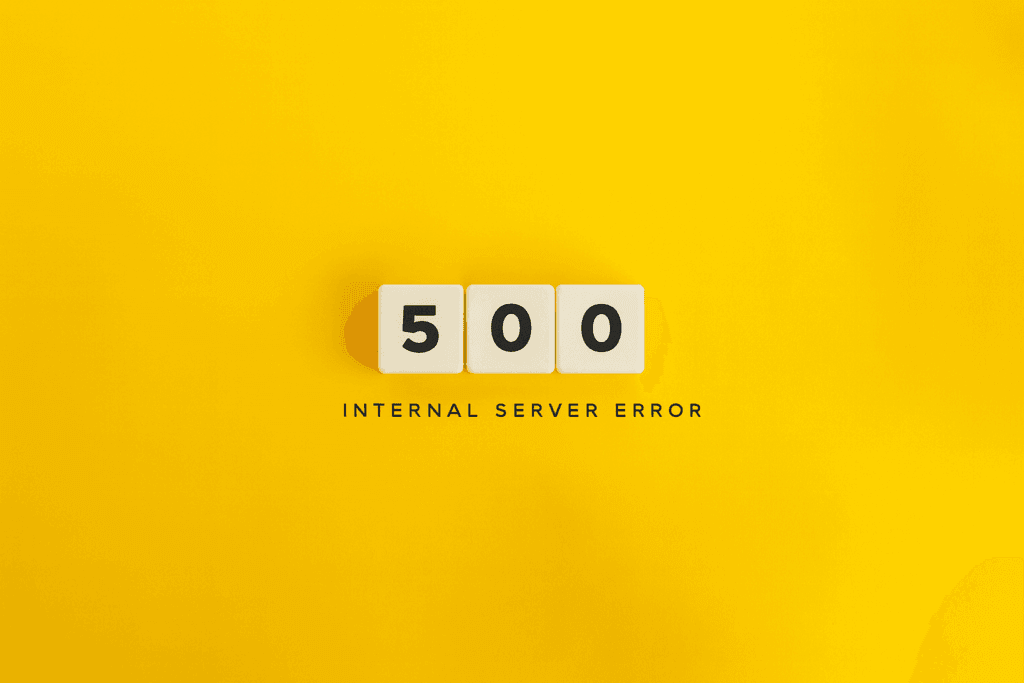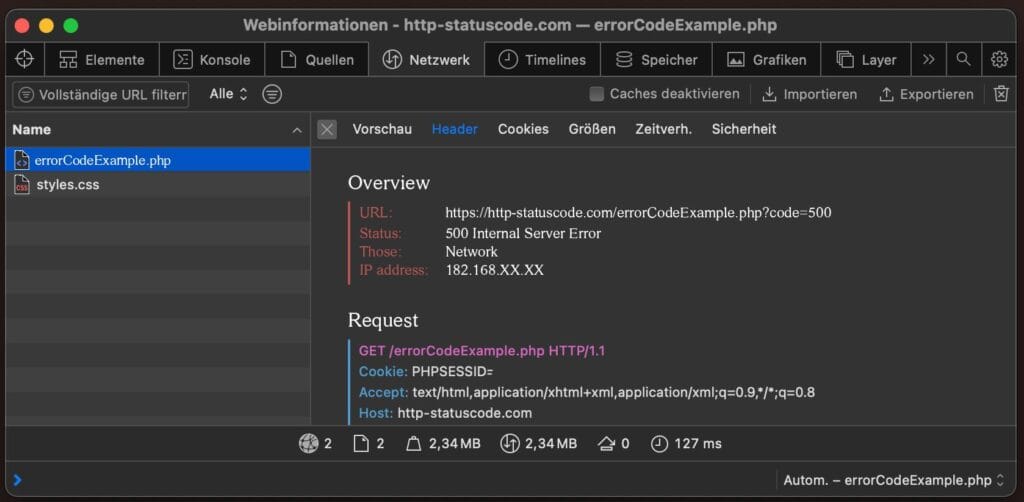
You open a page or send a request to an API, and then suddenly an error message appears that leaves little to be desired: 500 Internal Server Error. The browser usually displays a generic page, perhaps with some explanation, but often no more than that. No obvious cause, no tips, just that one message: something went wrong on the server.
The 500 status code belongs to the HTTP 5xx series and indicates that the server itself encountered an error that prevented the request from being handled. What exactly that error is? This message doesn't tell you. So it's up to you, or your logging, to dig deeper.
What exactly does a 500 mean?
The http status code 500 is a server-side error. That is, the problem is not on the client or user side. The request was valid, but something in the backend failed.
This can range from a failed database connection to a clumsy bug in your application code, or even a misconfigured server module. The annoying thing is that without further logging, you really have no idea what the underlying cause is. That's why a 500 error often feels like searching in the dark.
You can usually dig deeper in logs from frameworks such as Laravel, Symfony or Express. Monitoring tools such as Sentry, Datadog or Logtail can also help you uncover the cause.
What does a 500 error look like?

In a browser, you usually see something like:
500 Internal Server Error
The server encountered an internal error and was unable to complete your request.
Or you might encounter an API that refuses to answer, where the console says:
axioserror: request failed with status code 500
And in tools like Postman or Insomnia, you will simply see the response header with HTTP/1.1 500, with no further content. Also when crawling with, for example Screaming Frog can record this status code, especially for endpoints that rely heavily on server-side logic.
Common causes
There is no single cause for the 500 status code, but most problems fall under a few recurring categories:
- Bugs or unforeseen errors in the backend code
- Server configuration problems (think Apache, NGINX or .htaccess)
- Timeouts or errors on external API calls
- Problems with the database (think timeouts, corruption or connection errors)
- Unexpected exceptions not handled correctly
Sometimes a 500 status is generated without an error in the code, for example if the server itself is temporarily overloaded.
How do you solve it?
Resolving a status code 500 starts with insight. You'll need to dive into your logging to figure out exactly what happens when things go wrong. Some good first steps:
- Check your error logs (for example, /var/log/nginx/error.log or /storage/logs/laravel.log)
- Reproduce the request locally to see if you get the same error
- Check external dependencies and APIs your server is waiting for
- See if recent code changes or deploys could be related to it
- Add additional error handling temporarily to surface the exact error message
Are you using a framework that generates extensive error messages in a development environment? Enable that temporarily (local only!) to see what's broken faster.
When does a 500 become a problem?
Seeing the occasional http status code 500 is not necessarily serious. Any complex application can drop something from time to time. But once users encounter this error frequently, or once API requests fail with messages such as request failed with status code 500, then it does become a serious problem.
It affects not only the user experience, but also the reliability of your platform or application. With external systems using your API, it can even cause aborted processes or lost data.
Summary
A 500 status code is a generic message that the server could not process something. It is frustrating because it does not say what went wrong, only that something went wrong.
Do you regularly see error messages such as axioserror: request failed with status code 500? Then it's time to look deeper into your backend, your configuration and your dependencies.
Resolving an http status code 500 requires not guessing, but observation. Those with their logging and monitoring in place can isolate this error quickly, and resolve it before end users are affected.